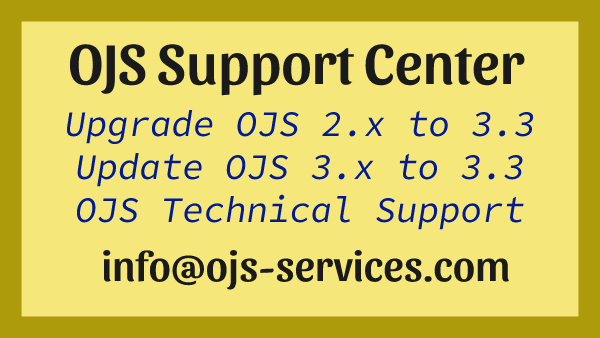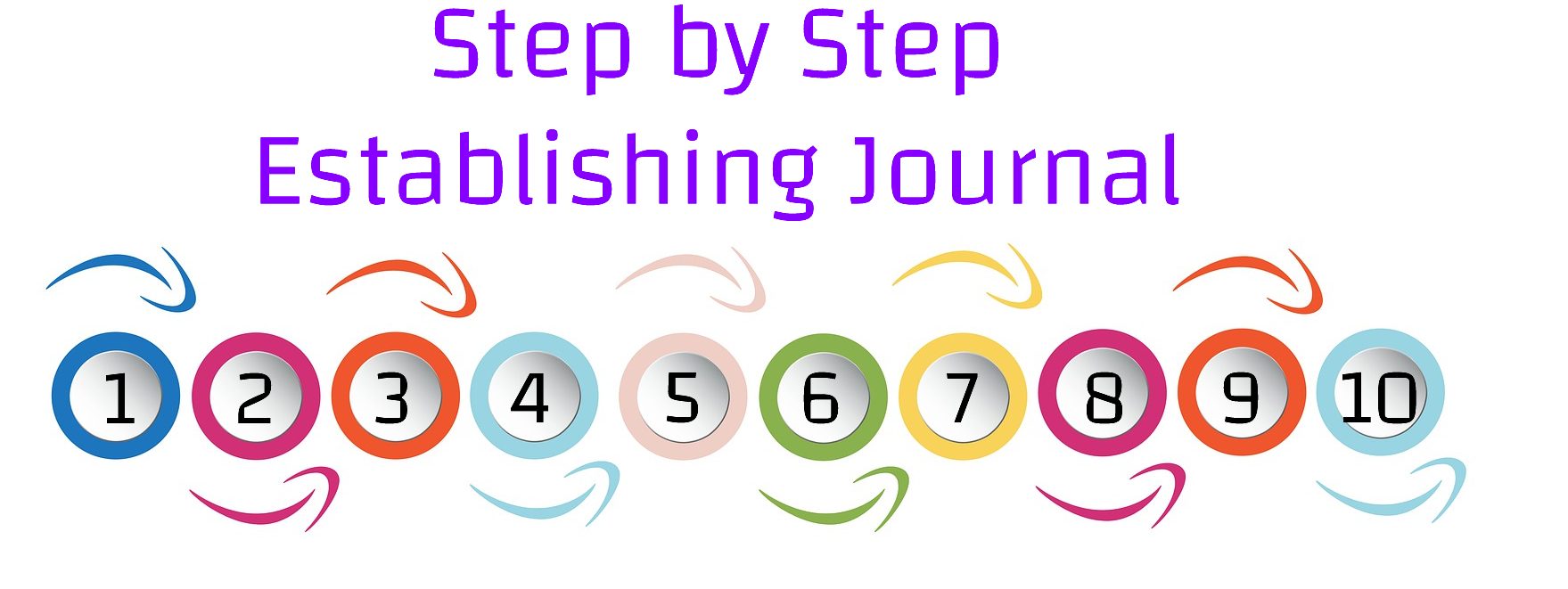Determining standardized content types (article types) is crucial in the publication and management process of scientific content, especially for those who aim to utilize advanced journal systems like OJS and integrations such as OPEN AIRE, OAI-PMH. Therefore, widely accepted standards like the COAR Vocabulary of Resource Types serve as guiding principles for accurately categorizing content and ensuring its accessibility.
The “Resource Type Vocabulary” defines a wide range of content types, categorized into 13 headings, providing specific definitions and scopes for each content type based on the nature and purpose of the content to be published or archived.
Starting from cartographic materials and extending to datasets, experimental data, visual and auditory content, and written works, this list encompasses a broad spectrum of content types, aiming to assist researchers and scientific content providers in accurately classifying their content.
It is worth mentioning that COAR (Confederation of Open Access Repositories) is a global alliance of open access repositories. Its goals include promoting and supporting the wider dissemination of scientific and academic knowledge through open access and strengthening the role of open access repositories in increasing the dissemination of research results and facilitating scholarly communication. Within this framework, COAR develops standards, provides policy recommendations, and fosters international collaboration to enhance the effectiveness of open access repositories.
Resource Type Vocabulary
1- Cartographic Material: Any material representing a geographical area or location at any scale. Cartographic materials include two and three-dimensional maps and plans (including maps of imaginary places); aviation, maritime, and celestial charts; atlases; globes; block diagrams; sections; aerial photographs with a cartographic purpose; bird’s-eye views (map perspectives), etc.
– Map: A visual representation of a geographical area or location.
2- Dataset: A collection of relevant facts and data encoded in a specific structure.
– Aggregated Data: Data collected from different sources and aggregated into a single dataset.
– Clinical Trial Data: Data obtained from clinical trials conducted on humans.
– Compiled Data: Collection of data gathered from multiple sources and organized.
– Encoded Data: Data transformed into a specific format.
– Experimental Data: Data obtained during experimental studies.
– Genomic Data: Data describing the genomic characteristics of an organism.
– Geospatial Data: Data containing geographical location information.
– Laboratory Notebook: A notebook where observations and results made during laboratory work are recorded.
– Measurement and Test Data: Data containing the results of a specific experiment or measurements of a process.
– Observational Data: Data based on observations or obtained through observation.
– Recorded Data: Recorded sound, image, or other data.
– Simulation Data: Data obtained during the simulation of a system or process.
– Survey Data: Data collected during a research or survey.
3- Design: Plans, drawings, or series of drawings showing how something is.
– Industrial Design: Design of commercial or industrial products.
– Layout Design: The three-dimensional arrangement of elements of an integrated circuit.
4- Image: A visual representation including all kinds of moving and still images, excluding text.
– Moving Image: A series of prerecorded still images shown consecutively to create the impression of movement.
– Video: A recorded version of moving images, usually accompanied by sound.
– Still Image: A recorded static visual representation including diagrams, drawings, graphics, graphic designs, plans, photographs, and prints.
5- Interactive Resource: A resource requiring user interaction for understanding, execution, or experience. Examples include forms on web pages, applications, multimedia learning objects, chat services, or virtual reality environments.
– Website: A collection of web pages published on the internet.
6- Learning Object: A digital resource that can be reused to enhance teaching and learning.
7- Patent: A patent or patent application.
– PCT Application: A patent application based on the Patent Cooperation Treaty (PCT).
– Design Patent: A patent granted for protecting the aesthetic design of a product or object.
– Plant Patent: A patent granted for the protection of a new plant variety.
– Plant Variety Protection: Protection granted for a new plant variety.
– Software Patent: A patent granted for protecting software or computer-related invention.
– Utility Model: A patent granted for protecting the functional design of a product.
8- Software: Computer program in source code (text) or compiled form.
– Research Software: Software specifically designed for research or scientific purposes.
– Source Code: Human-readable code of software.
9- Sound: A primarily auditory resource. Examples include music file formats, sound compact discs, and recorded speech or sounds.
– Musical Composition: A musical work or piece.
10- Text: A resource primarily consisting of words intended for reading. Examples include books, letters, theses, poems, newspapers, articles, archives of mailing lists. Note that text faxes or images still belong to the Text type.
– Annotation: Comments or notes in texts or documents.
– Bibliography: A list of references in a document or research.
– Blog Post: A post that is part of a blog published on the internet.
– Book: A written and usually bound work.
– Book Part: A specific section or part of a book.
– Conference Output: Material presented or delivered at a conference.
– Conference Paper not in Proceedings: A paper presented at a conference but not published in the official proceedings.
– Conference Poster not in Proceedings: A poster presented at a conference but not published in the official proceedings.
– Conference Presentation: A presentation made at a conference.
– Conference Proceedings: A publication containing all papers presented or delivered at a conference.
– Conference Paper: A paper presented or delivered at a conference.
– Conference Poster: A poster presented or delivered at a conference.
– Journal: A publication where academic or professional articles are published.
– Editorial: A written piece from the editor or editorial board of a journal or newspaper.
– Journal Article: An academic or scientific article published in a journal.
– Corrigendum: A small addition to a publication correcting a previous error.
– Data Paper: An academic paper focusing on a specific dataset and providing information about it.
– Research Article: A paper reporting the results of a scientific research.
– Review Article: An article reviewing the existing literature on a topic.
– Software Paper: A paper providing an introduction or description of software.
– Letter to the Editor: A letter written to the editor of a journal or newspaper.
– Report: A detailed evaluation of a subject or situation.
– Review: A detailed assessment of a work, product, or service.
– Book Review: A critical evaluation of a book.
– Commentary: A written piece presenting personal opinions on a topic.
– Peer Review: The evaluation and assessment of a scientific paper, thesis, or other work by an independent scholar.
– Technical Documentation: Documents explaining the technical details and operation of a product or process.
– Thesis: A large research project submitted for a bachelor’s, master’s, or doctoral degree.
– Bachelor Thesis: A thesis written for a bachelor’s degree.
– Doctoral Thesis: A thesis written for a doctoral degree.
– Master Thesis: A thesis written for a master’s degree.
– Transcription: Converting a sound or video recording into written text.
– Working Paper: A document containing interim results or thoughts about a research or project.
11- Trademark: A mark used to distinguish the goods or services of one enterprise from those of others. A trademark includes words and combinations of words (such as names).
12- Workflow: A registered sequence of steps that specifies reliably repeatable operations to be performed when carrying out a particular task, automatable, interrelated steps; for example, an in silico investigation that extracts and processes information from a series of bioinformatics databases.
13- Other: A resource type not included in the current categories.
Considering the above main and sub-types, the most common types encountered in academic peer-reviewed journals are listed below. Each issue of an academic journal may consist of different types of articles and content. When classifying the content to be published within an issue, the following headings can be considered:
Common Content Types Used in Academic Journals
– Journal Article
– Research Article
– Review Article
– Data Paper
– Software Paper
– Editorial
– Letter to the Editor
– Report
– Review
– Book Review
– Interview
– Lecture
– Conference Paper
– Thesis
– Working Paper
– Preprint
– Other
Note: OJS (Open Journal Systems) is an advanced article tracking and publishing system that facilitates the matching and presentation of the above content types in international standards, supporting integrations like OPEN AIRE, OAI-PMH.



Comments are closed